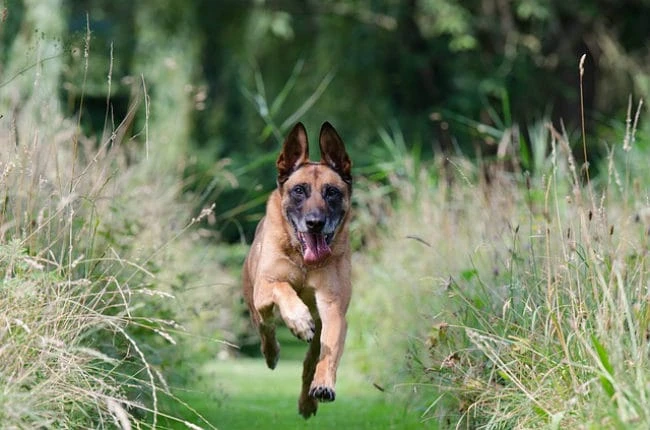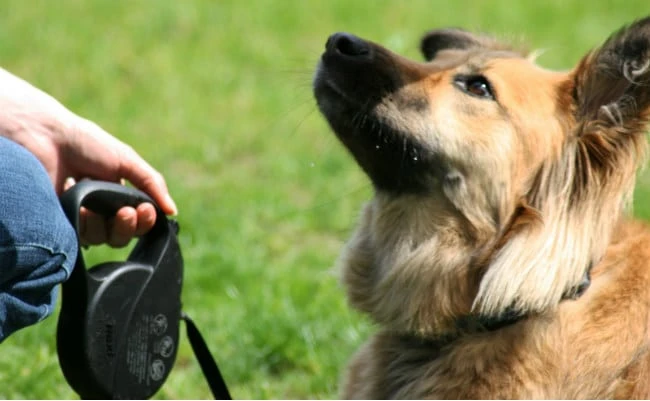Dog Separation Anxiety, Puppy Separation Anxiety, Canine Separation Anxiety

Dog Separation Anxiety
In this section we will provide a complete guide to dog separation anxiety, puppy separation anxiety and how to cure separation anxiety in dogs.
Due to the fact that there is a lack of information currently available we have dedicated an entire section to this problem and have also covered possible over attachment issues that may have developed in your canine.
Dogs that have developed confidence issues especially dogs that have been re-homed from an animal shelter seem to be more likely to develop behavior problems such as barking, digging or general destructiveness which are all common problems associated with this problem.
What is Canine Separation Anxiety

Dog separation anxiety is an intense panic and anxiety that a dog or puppy suffers when it is separated from the owner.
Canine separation anxiety is a huge problem within the canine world that effects approximately 10% of the 6.5 million dogs in the UK with some estimates putting the figure closer to 15%.
In 2004 it was estimated that there were 52 million dogs in the USA of which 14% suffered from an separation anxiety related problem – by our calculations that equates to about 7 million dogs in the USA.
Obviously this is an upsetting problem for the dog or puppy and an upsetting and also costly problem for the owner or family if you take into consideration the damage that separation anxiety in dogs can cause to the family home – more on this later.
Did you know?
Common Problems associated with Dog Separation Anxiety
Below we have listed some of the most common problems associated with separation anxiety in dogs.
- Dog Whining
- Destructive Behavior
- Dog Chewing
- Digging
- Soiling around the House
- Loss of Appetite
- Salivation(Excessive)
- Vomiting
- Crying
- Excessive Barking and Whining
Although these are some of the issues associated with this behavior problem the most common problems are:
- Barking and Whining when you leave the House.
- Very Destructive Behavior
- Soiling around the House i.e. Urinating and pooping.
How to Spot it.
-
- Does your dog seem to get extremely anxious when you are about to leave the House – even just picking up the House keys or Car keys can trigger separation anxiety?
-
- Does your dog exhibit really negative behavior when you leave the House e.g. barking, whining, urinating or pooping around the House?
-
- Does your dog want to be constantly around you? Does he follow you around the House and get distressed when he can’t be around you?
- Does your dog get excessively excited when you get home after being out – not just a bit happy but really over the top – and it takes you ages to calm him down?
If you recognize any of these signs and symptoms in your dog it is quite possible that he is suffering from separation anxiety. Take him to your Vet for advice or a local professional dog trainer. Puppy training classes maybe a good place to start so that you can ask other dog owners and get specialized advice.
What Causes it?
It is often difficult to pin point the exact moment when you see it materialize in your dog or puppy – but if you try tracing tour routine back to certain events that may have changed in you and your dog’s life you maybe able to work out how and why the problem started.
Try looking at out check list below for advice on common reasons why the behavior problem sometimes occurs.
- Maybe your work routine has suddenly altered – you maybe leaving the House earlier and getting back later – this is enough to trigger separation anxiety in dogs and puppies.
- It is a sad fact but a large amount of dogs from rescue centers have separation anxiety or develop it for obvious reasons.
- Has your dog had a frightening or traumatic experience – we recently treated a dog that developed this anxiety disorder after fire works night – a thunderstorm could also it.
- You may have moved House – new smells and a different environment can cause separation anxiety in dogs.
- Is your dog very reliant on you being around – maybe you gave been out of work for a period of time and suddenly you find a job that suddenly leaves your dog or puppy on their own.
How to Cure Dog Separation Anxiety
1. Separation Anxiety in Dogs: Learn how to cure more problems associated with dog separation anxiety including chewing, barking, destructive behavior and other problems associated with separation anxiety in dogs.
2. Separation Anxiety in Dogs: In this section you will learn how to train a puppy or dog to relax. A common problem often associated with separation anxiety in dogs is your dog or puppy getting over excited, jumping up or chasiing his tail. Take a look at this section and learn how to cure this common problem.
3. Separation Anxiety in Dogs: One of the most common problems associated with dog separation anxiety is dog barking. In this section you will learn how to train a dog to bark and be quiet on command. Your very own invisible remote control – all achieved through dog obedience training.
Return from Dog Separation Anxiety back to Dog Obedience Training Online Home Page




